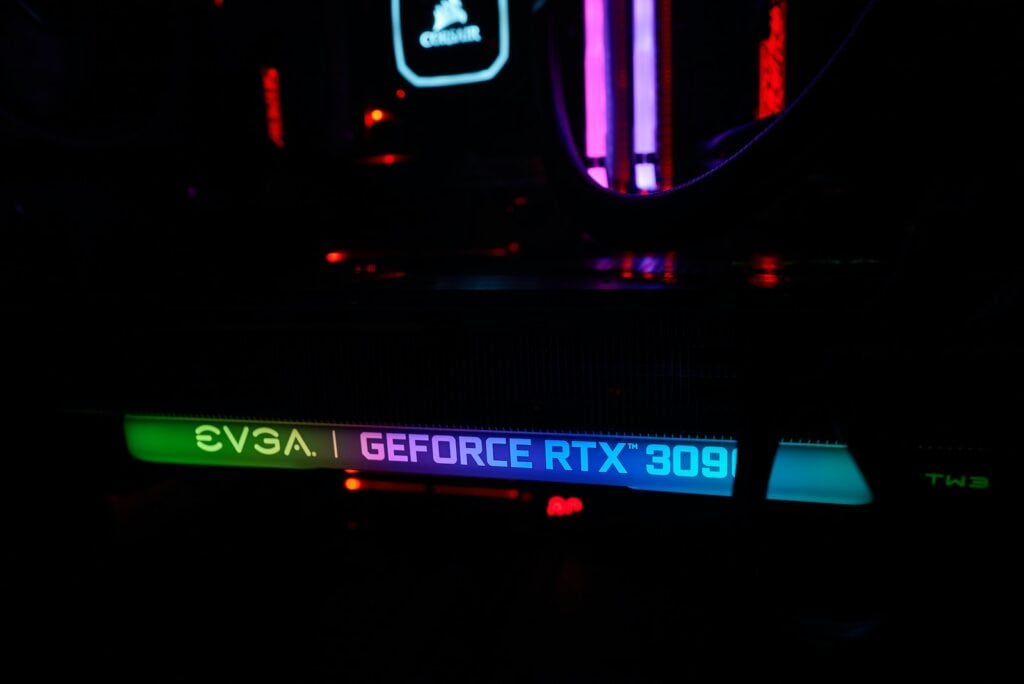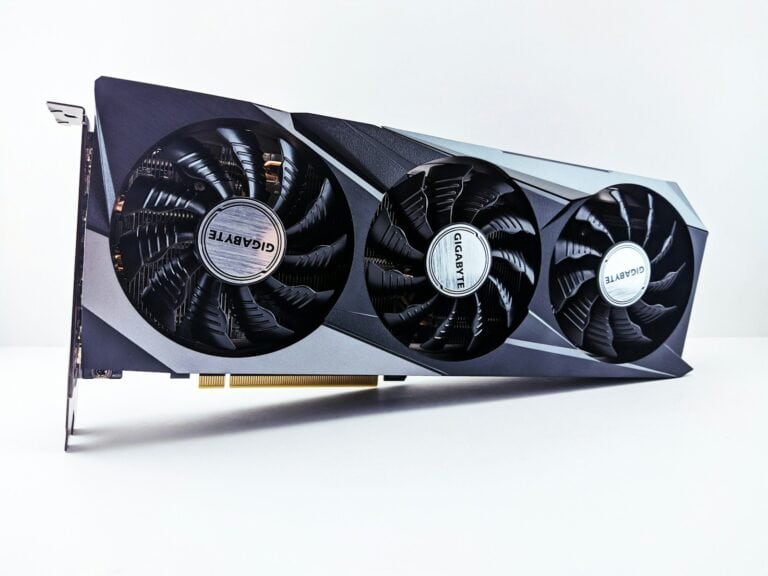EVGA, a prominent player in the graphics card industry, made a significant announcement that shook the technology community. The company declared its departure from producing graphics cards, a move that was particularly unexpected because EVGA was a major supplier for Nvidia, a leading chip manufacturer. This decision marks a turning point for EVGA, as it steps away from a segment that had been a fundamental part of its business for years.
Why Did EVGA Stop Making GPUs?
In September 2022, EVGA — one of the most respected names in PC hardware — shocked the gaming community by announcing it would no longer produce graphics cards. This decision effectively ended its two-decade partnership with NVIDIA, the company behind GeForce GPUs.
Three years later, in 2025, EVGA still hasn’t returned to the GPU market (source) — and the story behind their exit remains one of the most dramatic moments in PC hardware history.
⚙️ A Quick Background: EVGA’s Role in the GPU Market
Founded in 1999, EVGA built its reputation as one of NVIDIA’s top board partners, known for:
- High-quality custom cooling designs (like the FTW and SC series)
- Excellent customer support and warranties
- A strong enthusiast and overclocking community
By 2022, over 70% of EVGA’s revenue reportedly came from GPU sales (source). So when EVGA announced it was leaving the market, it wasn’t a small pivot — it was a complete business transformation.
💥 The Breaking Point: Tension with NVIDIA
According to EVGA’s CEO Andrew Han, the decision to stop making GPUs was driven by a breakdown in the relationship with NVIDIA, not financial insolvency.
Here are the key issues that led to the split:
1. Lack of Transparency and Communication
NVIDIA reportedly kept board partners in the dark about critical information — including specs, pricing, and launch details — until the public reveal.
EVGA claimed it often learned about new GPU details at the same time as consumers, making it difficult to plan production and pricing.
(Source: PCMag)
2. Pricing Conflicts
NVIDIA’s Founders Edition (FE) cards — sold directly by NVIDIA — often undercut partner pricing.
This left companies like EVGA struggling to compete while maintaining profit margins.
3. Feeling “Disrespected”
EVGA executives described NVIDIA’s behavior as disrespectful and controlling, limiting partners’ ability to innovate or differentiate their products.
(Source: Kotaku)
4. Profit Margins Shrinking
Despite high GPU prices during the RTX 30-series era, board partners like EVGA reportedly made very slim profits due to NVIDIA’s pricing and supply control.
🧮 EVGA’s Official Reasoning
EVGA publicly stated that it would:
- Stop all GPU production after selling its remaining RTX 30-series stock.
- Not partner with AMD or Intel for future GPUs.
- Continue producing other hardware, including PSUs, motherboards, and accessories.
The company emphasized that the decision was “about principle, not money.”
(Source: VTech Insider)
💼 What Happened After the Exit
1. No RTX 40-Series EVGA Cards
EVGA confirmed it would not produce any RTX 40-series (Ada Lovelace) GPUs.
This left a notable gap in the market for enthusiasts loyal to EVGA’s designs.
2. Focus on Other Products
EVGA shifted focus to:
- Power supplies (still among the best-rated in the industry)
- Motherboards and peripherals
- Gaming accessories and capture devices
3. Employee and Community Impact
Many employees were reportedly laid off or reassigned.
The enthusiast community — especially EVGA’s forums and overclocking fans — expressed disappointment but largely supported the company’s stance.
🔮 Will EVGA Ever Return to GPUs?
As of 2025, EVGA has not re-entered the GPU market, nor announced any plans to do so.
The company has maintained that it does not intend to partner with AMD or Intel, preferring to focus on independence and other product categories.
Industry analysts suggest that unless NVIDIA changes its partner model — or EVGA finds a compelling new GPU partner — a comeback is unlikely.
(Source: VideoCardz)
🧠 Summary: Why EVGA Stopped Making GPUs
| Reason | Description |
|---|---|
| Lack of Transparency | NVIDIA withheld key information from partners. |
| Pricing Conflicts | Founders Edition cards undercut EVGA’s pricing. |
| Disrespect & Control | EVGA felt restricted and undervalued by NVIDIA. |
| Low Profit Margins | Rising costs and shrinking margins made GPUs less viable. |
| Principle Over Profit | EVGA chose to prioritize independence and integrity. |
🧩 Final Thoughts
EVGA’s exit from the GPU market marked the end of an era for PC enthusiasts.
Their departure highlighted long-standing tensions between NVIDIA and its board partners, raising questions about the future of third-party GPU manufacturing.
While EVGA continues to thrive in other hardware sectors, its absence from the GPU world remains deeply felt — a reminder that even the strongest partnerships can fracture under corporate pressure.
Sources:
- VideoCardz – Three Years Since EVGA Left the GPU Market
- PCMag – EVGA to Exit Graphics Card Market
- Kotaku – EVGA Parts Ways With NVIDIA
- VTech Insider – Why EVGA Stopped Making GPUs
- AC3Filter – Why Did EVGA Stop Making GPUs?
Why Did EVGA Stop Making Graphics Cards?
| Reason | Description |
|---|---|
| Disagreements with Nvidia | EVGA publicly cited feeling disrespected by Nvidia, their graphics card chip supplier. This included issues like: * Limited communication regarding pricing and product launches * Feeling pressured to prioritize sales over quality control |
| Financial Strain | The graphics card market can be volatile. EVGA claimed that: * Profit margins on graphics cards were lower compared to other products they make. * The unpredictable nature of the market, including crypto mining booms and busts, made it difficult to plan. |
| Operational Challenges | EVGA’s approach to manufacturing may have contributed: * They relied on other companies for circuit boards and coolers, potentially reducing profit margins. * Launching and supporting new Nvidia graphics cards could be resource-intensive. |
The reasons behind this departure underline a deep-seated disagreement with Nvidia, coupled with business and operational challenges. EVGA cited unfavorable conditions and conflicts that made the continuation of this partnership unsustainable. This shift in EVGA’s strategy prompts discussions on the impact of such a change on consumers and the graphics card market at large.

Key Takeaways
- EVGA discontinued its graphics card production, signaling a major shift in its business strategy.
- Disagreements with Nvidia and various operational difficulties influenced EVGA’s decision.
- EVGA’s exit from the graphics card market alters the landscape for consumers and competitors.
The Strategic Shift in EVGA’s Business Model
EVGA made a bold move in exiting the graphics card market, reshaping its business model after a long-standing partnership with Nvidia.
Reassessment of Partnerships and Market Dynamics
In a rapidly evolving tech industry, EVGA reconsidered its alliance with Nvidia. This scrutiny of market trends and the dynamics of existing partnerships led EVGA to step away from the GPU space.
Financial Considerations Behind Exiting the GPU Market
Financial outcomes played a crucial role in EVGA’s decision. With GPUs contributing heavily to revenue, the move signals deeper business priorities, emphasizing profitability and sustainable growth.
Industry Reactions and Community Response
The announcement by EVGA sparked conversations among industry experts and the gaming community. Notable channels like Gamers Nexus and JayzTwoCents shared insights, highlighting the impact of EVGA’s departure.
Exploring New Horizons
Following its exit from the GPU market, EVGA turns its focus to other product lines like motherboards and power supplies. This pivot opens new paths for innovation and market presence.
Implications for Current and Future Product Lines
EVGA’s GPU departure raises questions about the future of its product offerings. The company now directs its engineering prowess to other areas of PC hardware, ensuring loyal customers continue to receive quality products.
Evolution of Customer Support and Services
EVGA intends to maintain robust support for existing graphics card customers. New ventures in hardware will be accompanied by strong warranties and customer services to uphold EVGA’s reputation in the industry.
The Technical and Operational Challenges for EVGA
As EVGA transitioned away from producing graphics cards, they encountered significant hurdles that contributed to their decision. These ranged from manufacturing difficulties to market volatility, each posing its own set of challenges.
Manufacturing and Engineering Constraints
The process of creating graphics cards involves complex engineering and manufacturing steps. EVGA faced substantial costs in research and design. The math behind engineering a powerful GPU is intricate, requiring substantial investment in both time and resources. Additionally, they had to consider the manufacturing capacity both in the US and Taiwan to meet their production goals. This became increasingly difficult with constrained margins in a competitive landscape.
Supply Chain and Inventory Management Issues
Management of the supply chain and inventory is critical in the tech industry. During the crypto boom, the sudden surge in demand for GPUs, driven by Ethereum mining, led to a depletion in stock. After the boom, the market faced an oversupply which hurt companies like EVGA. They needed to balance having enough stock to meet demand without being left with excess inventory, which could tie up money and negatively impact margins.
Overcoming the GPU Market Fluctuations
The GPU market experiences rapid and unpredictable fluctuations. Prices and demand can swing wildly based on factors like the crypto market or new product releases from competitors like Nvidia, AMD, or Intel. EVGA’s strategy needed to be flexible enough to navigate these shifts. They also were subject to the dynamics of being an authorization partner with Nvidia, which added another layer of complexity to their business model.
Strategizing Product Development in a Competitive Landscape
In the competitive world of PC components, strategizing product development is key to staying relevant. With Nvidia releasing 40-series GPUs, EVGA needed to decide if they could compete on coolers, pricing, or other features to stand out in the North American market. The pressure to innovate and bring unique products to the market, along with balancing engineering challenges and manufacturing costs, placed a heavy burden on the company. With 80% of their gross revenue depending on the graphics card market, the stakes were extremely high.
Frequently Asked Questions
EVGA’s departure from the graphics card industry has raised several questions among tech enthusiasts and consumers alike. This section provides answers to some of the most common inquiries regarding this significant industry development.
What led to EVGA’s decision to exit the graphics card market?
EVGA cited challenges and disagreements with Nvidia as the main reasons for their withdrawal from making graphics cards. Relationships between the two companies had become strained, leading to the decision.
When did EVGA announce they would stop manufacturing GPUs?
The company made its announcement in the fall of 2022, signaling the end of its production of GPUs.
What are the implications for the GPU market following EVGA’s departure?
EVGA’s exit could lead to reduced competition and choice in the GPU market, potentially affecting prices and innovation.
Has EVGA indicated a possibility of re-entering the graphics card production in the future?
There has been no indication from EVGA that they plan to re-enter the graphics card manufacturing business after their decision to stop.
What product lines will EVGA focus on after ceasing GPU manufacturing?
Post-GPU, EVGA plans to concentrate on their other product lines, which include power supplies, gaming mice, and motherboards.
How does EVGA’s exit from the graphics card market affect consumers and competitors?
Consumers may see fewer options when choosing graphics cards, while competitors could experience changes in market share and dynamics due to EVGA’s departure.






